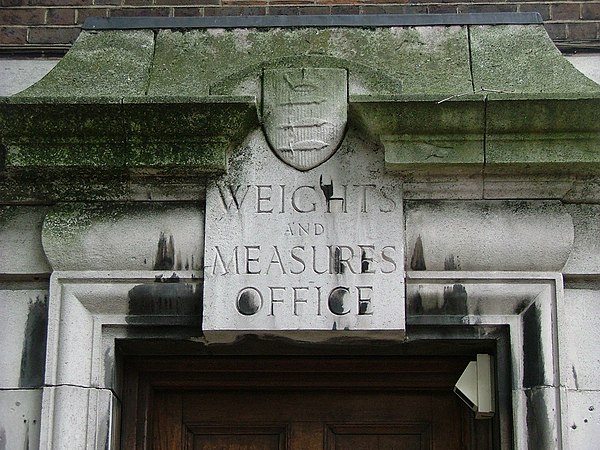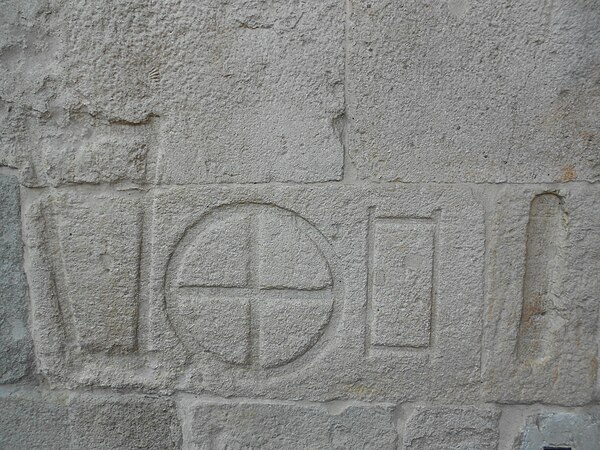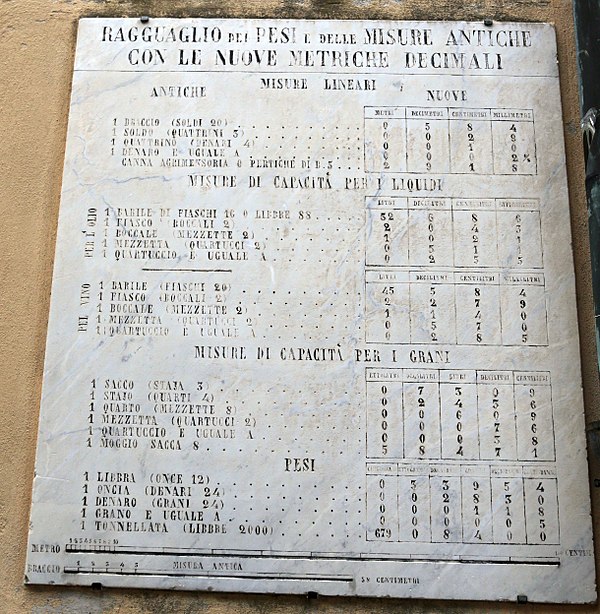Weights and Measures Acts (UK)
Videos
Page
Weights and measures acts are acts of the British Parliament determining the regulation of weights and measures. It also refers to similar royal and parliamentary acts of the Kingdoms of England and Scotland and the medieval Welsh states. The earliest of these were originally untitled but were given descriptive glosses or titles based upon the monarch under whose reign they were promulgated. Several omnibus modern acts are entitled the Weights and Measures Act and are distinguished by the year of their enactment.

The informal public imperial measurement standards erected at the Royal Observatory, Greenwich, London, in the 19th century: 1 British yard, 2 feet, 1 foot, 6 inches, and 3 inches. The inexact monument was designed to permit rods of the correct measure to fit snugly into its pins at an ambient temperature of 62°F (162⁄3°C).

Bronze Yard No.11, the official standard of length for the United States between 1855 and 1892, when the Treasury Department formally adopted a metric standard. Bronze Yard No.11 was forged to be an exact copy of the British Imperial Standard Yard, which was ruined in 1834 during the Burning of Parliament. Both were line standards: the yard was defined by the distance at 62°F between two fine lines drawn on gold plugs (closeup, top) installed in recesses near each end of the bar.

A helium–neon laser at the Kastler-Brossel Laboratory at Univ. Paris 6. Britain's metric and imperial units of length and volume are now all ultimately derived from measurements of the speed of light in vacuum.

Before the 2019 redefinition of the SI base units, Britain's units of mass were derived from national standards periodically reverified against the platinum and iridium international prototype of the kilogram stored beneath two bell jars in a basement vault at the International Bureau of Weights and Measures's headquarters at Pavillon de Breteuil in Paris. A display replica shown at Paris's Cité des Sciences et de l’Industrie shown here. The modern kilogram is defined by a fundamental property of matter.
Unit of measurement
Videos
Page
A unit of measurement, or unit of measure, is a definite magnitude of a quantity, defined and adopted by convention or by law, that is used as a standard for measurement of the same kind of quantity. Any other quantity of that kind can be expressed as a multiple of the unit of measurement.

The former Weights and Measures office in Seven Sisters, London

Units of measurement, Palazzo della Ragione, Padua

An example of metrication in 1860 when Tuscany became part of modern Italy (ex. one "libbra" = 339.54 grams)